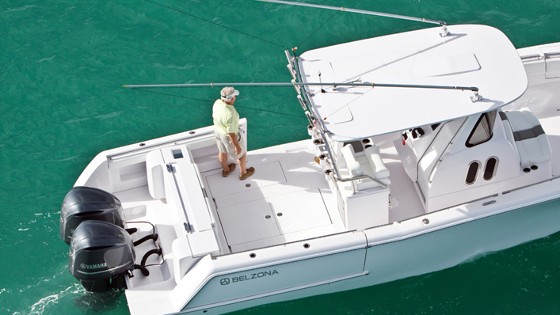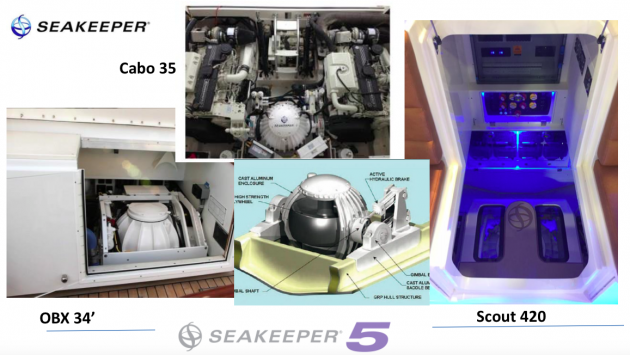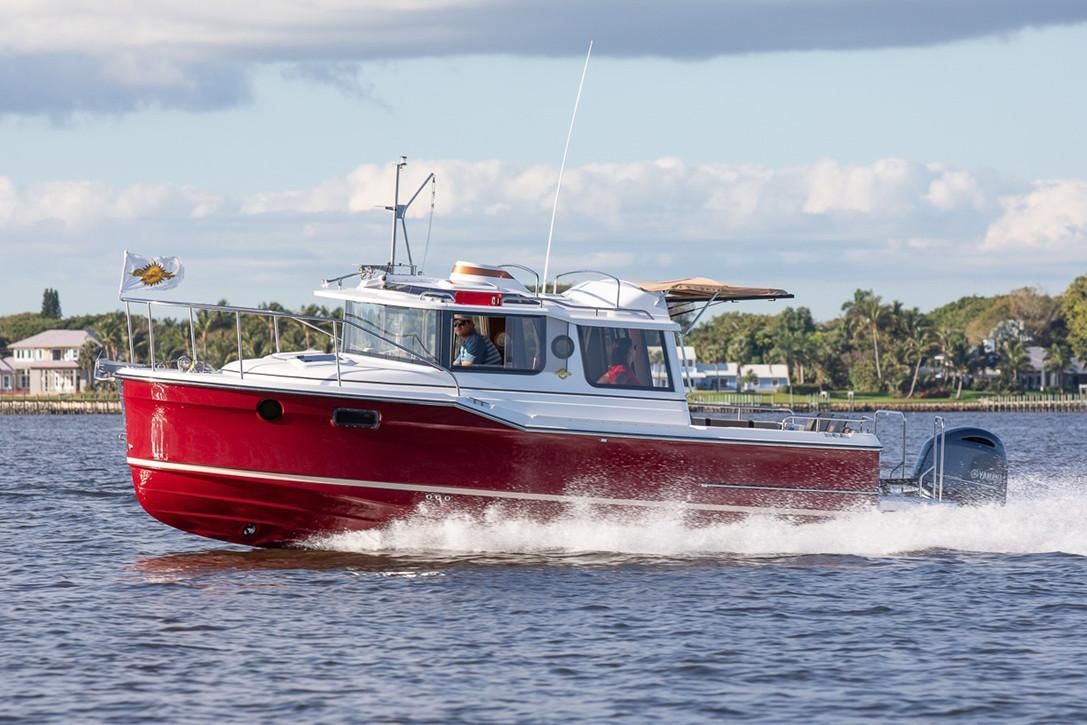Top 5 Powerboat Design Trends
New powerboats benefit from the latest boating technology and innovation.
As the economy continues to improve, we’re seeing a number of noteworthy advancements being incorporated into the latest model boats. However, not all innovations work in practice, or deliver good value for boat owners. We interviewed John Canada, President of Ocean5 Naval Architects, to help identify the best ideas in the latest designs. Here are our top five design and technology innovation picks.
Double-Stepped Hulls
In the quest to increase performance and versatility to match the wide-open throttle specs of their competitors, manufacturers are exploring more complex hull forms. One of these is the double-stepped hull. The stepped hull has been around for years; the introduction of air under the aft end of the hull helps reduce friction and gets a boat running faster and more efficiently. But now we’re starting to see double steps. The theory is that multiple steps will provide a significant performance boost in a wider variety of sea state and load conditions.
Examples include the Seavee 270Z and Cutwater Solara 24. For the 270Z, Seavee opted for larger openings to increase airflow, together with speed rails to counteract slippage in sharp turns (one of the main drawbacks with many stepped designs). The Solara 24 has combined steps with a re-designed hull surface to reduce water adhesion. The high-tech name Cutwater uses for this is "Laminar Flow Interrupters."
These types of innovations are only possible with the use of 3D design programs with fluid dynamics. Designers generate several computer models to optimize the hull designs, and this process wouldn’t have been feasible a few years ago with physical models.

One particularly unusual concept can be seen on the Belzona 325, which has sliding gunwales that open up wide on either side of the boat. For more information, read Belzona 325 Center Console: A Futuristic Fishboat with Flair.
Side Access
Lavish side balconies and terraces first came to superyachts a few years ago. The battle for the coolest side access is now coming to recreational powerboats. Current designs incorporate everything from single and double doors, to sliding doors and extending platforms. Swimming and diving access will be a breeze with these features, and stepping off onto the dock will be a lot easier, too.
Increased Stability
Another megayacht trickle-down innovation is stabilizing and leveling technology, aimed at helping reducing boat roll, seasickness, and fatigue. That means more hours of fun and fishing. Previously available as options in larger boats such as the Viking 66 and Hatteras 70 GT, with lower cost stabilizers such as the Seakeeper 5, we’re now starting to see availability for 30’ to 50’ sized boats. (The Seakeeper comes standard on the MJM 50z.)
Auto leveling systems from Lenco Marine AutoGlide and Humphree also help avoid the need to manually control your trim tabs while you're on the water. The systems use your engine and GPS data to automatically adjust your trim tabs, keeping the boat at the optimum running angle while also improving performance and fuel efficiency.

The Seekeeper 5 typically fits into open spaces in the engine compartment on boats in the 30' to 50' range (image courtesy of John Canada).
Connected Helms
One of the advancements I’m most excited about is the amazing electronics and connectivity now included in many base model boats, some aspects of which we discussed recently in Get Connected: WiFi on Boats. The Yamaha Connext helm is another sort of example, with both a touch-screen display and joystick controller to access not only engine and battery status, but also to your music over Bluetooth. The new Scout 420 has integrated Wi-Fi built in as well as a Bluetooth stereo, so you can keep your phone dry while listening to music.
On a larger scale, I like the direction Simrad is taking with their Glass Bridge system, which integrates charting, radar, autopilot, engine data, FLIR thermal imaging cameras, marine audio, and now forward scan sonar into a touch screen unit. Add a Wi-Fi module, and the data is available anywhere on board with your iPhone, iPad or Android device.
Electric Power
Last but not least, we see electric as a significant and growing power trend. Although gas and diesel prices are at a low point, electric and hybrid power are still a hot topic in boating.
The new Beneteau Swift Trawler and the Greenline range offer hybrid drives and integrated solar panels, and hybrid seems on the cusp of broader adoption. The opportunity for boat owners to enjoy a clean, quiet experience, especially with low-speed use such as moving in and out of marinas, is very appealing.
On the solar front, as panels become less expensive and our thirst for power-consuming equipment grows, we expect to see more boats coming with this equipment as standard.
The Future
Gazing into our crystal ball, maybe your next boat will actually be… an airplane? This is what the MVP (Most Valuable Plane) is aiming to do. It’s a plane that does double-duty as a boat; imagine flying into a secluded, little-known fishing area, and then fishing using the onboard trolling motor. With new innovations like these, the sky really is the limit.













